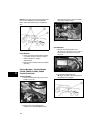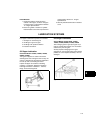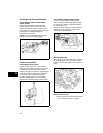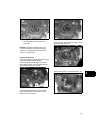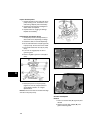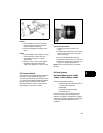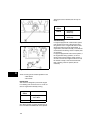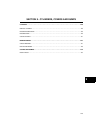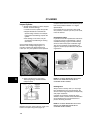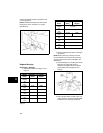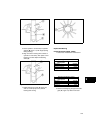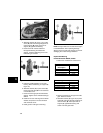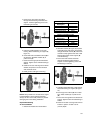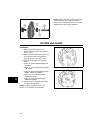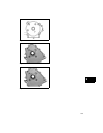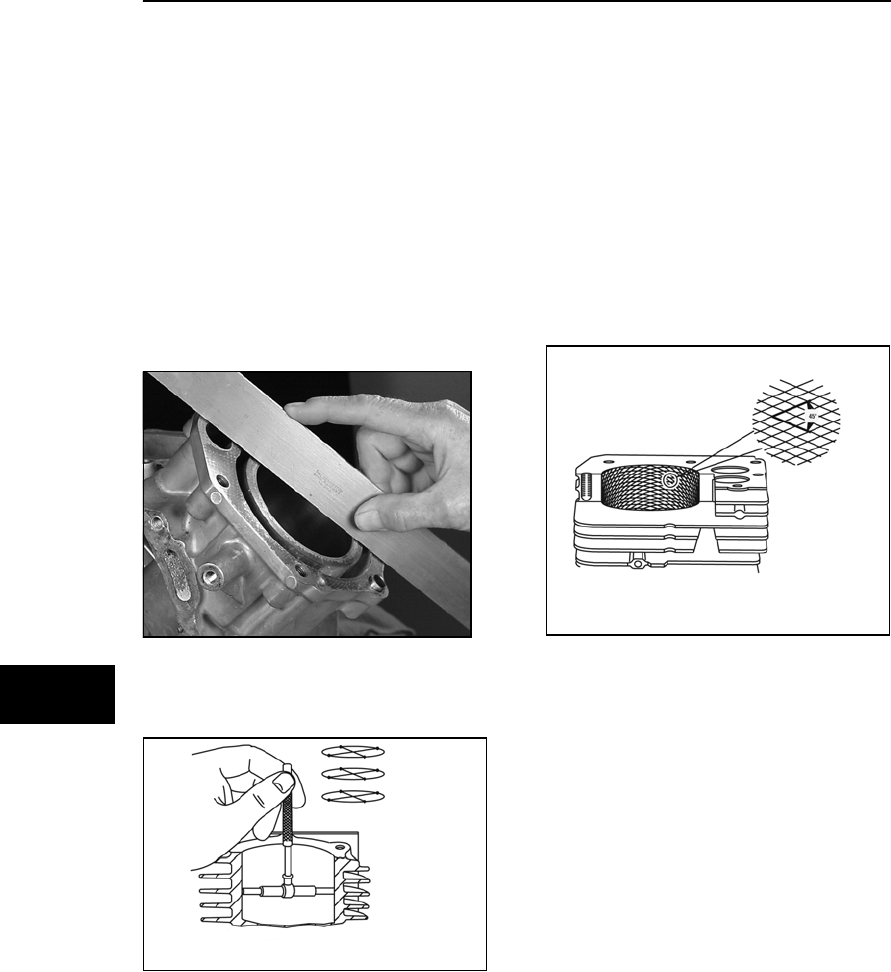
126
9
9
CYLINDER
Inspect Cylinder
1. Visually check cylinder for cracks, stripped
threads, and bore damage.
• If cracks are found, replace the cylinder.
• Stripped threads can sometimes be
repaired using a helicoil, but if multiple
holes have thread damage, replace the
cylinder.
• Bore damage, if not severe, may be
corrected by reconditioning or resizing
(see below).
Check cylinder head mounting surface for
distortion with a straight edge (Figure 1). If
mounting surfaces are distorted more than
0.004” (0.1 mm), the cylinder must be replaced.
Figure 1
2. Check cylinder bore for wear using
Telescoping Gauge #19485 and Dial
Caliper #19199.
Figure 2
Measure twice (90° apart) at the top, center, and
bottom of the piston ring travel (Figure 2).
Compare measurements to the standard cylinder
bore sizes provided in Section 12 - Engine
Specifications.
If the cylinder bore is more than 0.003” (0.08
mm) oversize, or 0.0015” (.04 mm) out of round,
it must be resized.
Reconditioning Bore
If cylinder bore is within specification and shows
no signs of scoring or other damage, it can be
reconditioned using a rigid hone with finishing
stones to restore the proper crosshatch angle.
The correct crosshatch of approximately 45
°
(Figure 3) ensures proper lubrication and piston
ring break-in.
Figure 3
NOTE: IT IS MOST IMPORTANT THAT THE
ENTIRE CYLINDER BE THOROUGHLY
CLEANED AFTER HONING.
Resizing Bore
Always resize to exactly .020” (.51 mm) larger
than standard bore size. Done accurately, the
service oversize rings and pistons will fit perfectly
with proper clearances.
Cylinders can be quickly resized with Hone
#19205 or #1921. Use the stones and lubrication
recommended by the hone manufacturer to
produce the sizing and finish.
NOTE: IT IS MOST IMPORTANT THAT THE
ENTIRE CYLINDER BE THOROUGHLY
CLEANED AFTER HONING.



